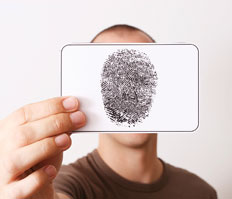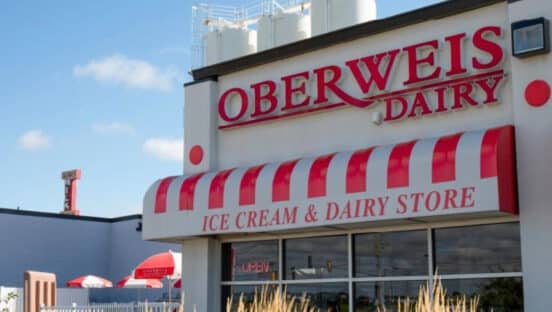The largest expense that foodservice operators incur, other than food, is employee labor costs. In addition to wages, human capital can cost quick serves countless dollars in employee theft and misuse of the time-management system. With biometric technology, it’s virtually impossible for employees to “beat the system”—resulting in a quick return on investment for restaurant operators.
A growing number of quick serves are incorporating biometrics like fingerprint readers into their time-clock management and POS systems, and many are wondering how they ever operated without it.
“Biometrics provides an easy way for a server or a manager to be able to establish to the POS system their identity. It tells the system ‘I’m really here right now,’” says Jim Fulton, vice president of marketing for the Redwood City, California–based Digital-Persona, a fingerprint-identity provider for restaurant POS systems.
The most popular biometric devices used by restaurants arefingerprint and hand geometry readers. These devices collect and store physical attributes such as the length, width, and thickness of a person’s hand, as well as the lines of a person’s fingerprint. The devices store a mathematical representation of the hand or fingerprint and each time an employee clocks in or performs functions on the point-of-sale system, the biometric reader detects and compares it with the stored data—making it impossible for employees to share access.
“When a server clocks in, instead of swiping a card or typing in a user name and password, they’re able to just touch a fingerprint sensor,” Fulton says. “Then whenever they conduct any type of transaction, such as putting in an order or closing a transaction, instead of using a swipe card, all they have to do is touch the fingerprint sensor.”
Macie Mackey, owner of a Dairy Queen unit in Beaverton, Oregon, has been using fingerprint biometrics for more than a year and appreciates the benefits it provides, including eliminating the need for manager keys and increased employee accountability.
“With the fingerprint sensors, it’s impossible for someone to log in as someone else,” Mackey says. “There’s no more need for shift-leader keys; a shift leader can override a transaction with just their fingerprint. And it absolutely cuts down on employees issuing improper discounts and refunds, because that’s all tracked in the system, as well.”
Biometrics also eliminate the problem of “buddy punching,” where crew clock in their friends so they’re not docked pay, and prevents employees clocking in too early for a shift—a feature of biometrics that can significantly cut labor costs.
“Imagine the savings if every employee is clocking in five or 10 minutes early every day, and you multiply that by 100 employees at the restaurant—that’s 100 times 10 minutes,” says Fred Schmitthammer, president and CEO of Inception Technologies, a Glendale, Arizona–based time- and attendance-software company. “Multiply that by your hourly rate and in the first month that will pay for a significant piece of the system, which on average runs between $2,000 to $2,500 for a system with the biometric hand reader.”
Depending on how big of a problem your store is having, biometrics can reduce your payroll by as much as 30–40 percent because it cuts out buddy punching, Schmitthammer says.
“Even if it’s 10 percent—that is significant savings,” he says. “Biometrics can make sure that your costs are reduced by simply making sure that the right people are there when they’re supposed to be there. Restaurants are always making expenditures on new equipment, but this one really pays them back the quickest because it impacts the bottom line.”
Jason Dugger, creative director with e-DATA Corp, a biometric time-management manufacturer based in Coppell, Texas, notes that biometrics can eliminate time and expenses associated with keys or swipe cards that can be loaned, lost, or copied—especially during staff turnover.
“If your store isn’t using biometric technology, I’d recommend that you go visit a store that has it so you can see it for yourself,” Mackey says. “I can’t think of any negatives with it. It’s fabulous.”
Raymond Chera, an Arby’s franchisee, chose to use a POS system with biometric
fingerprint devices integrated into each terminal for his new store in Brooklyn, New York.
“It offers me and my managers a remarkable level of added security to keep track of each individual employee and what time they clock in and out,” Chera says. “It ties the employee to that register and raises accountability in a way that a card swipe or password could never do.”
Fulton says biometrics is an easy way for restaurants to cut operating expenses overnight with just a small initial investment.
“Particularly in this economy, quick serves need to be able to stop labor fraud and food theft,” he says. “It’s all about saving money—that in itself is really the big driver for restaurants. With biometrics, you’re able to ensure that the supervisors and managers are always involved in discounts and refunds.”
Biometrics also offer perks for employees, especially employees that work for tips. “We explain to employees that this is going to help them always get credit for every transaction they do,” Fulton says. “No one is going to be able, for example, to take credit for a table that someone else serviced. You’re going to always get credit and never lose out.”
Biometric devises can be easily integrated with a wide variety of POS systems as an add-on feature.
“It’s now offered on the overwhelming majority of platforms and can be plugged in very inexpensively,” Fulton says. “When you look at the savings that you get, it’s so overwhelmingly compelling, we’re finding that customers who start out with a pilot in a few stores will very rapidly roll it out to many other stores because the payback is so fast. They tell us, ‘How could we have operated without this?’ The system is such a slam dunk.”













